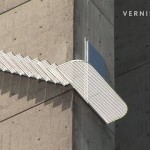For their current exhibition at Museum Tinguely, the Swiss artists Gerda Steiner & Jörg Lenzlinger have set up a three-part show, a labyrinthine cabinet of curiosities between nature and artificiality. The retrospective, entitled “Too Early to Panic”, invites the visitors to explore more than 25 years of Gerda Steiner & Jörg Lenzlinger’s artistic universe. Gerda Steiner & Jörg Lenzlinger began their collaboration in 1997. Since then, they have been co-creating in situ installations, often immersive ones, in the form of lush worlds where natural elements mix with just as many manufactured objects. This video provides you with a walk-through of the exhibition on the occasion of the press preview.
Gerda Steiner & Jörg Lenzlinger: Too Early to Panic / Museum Tinguely, Basel (Switzerland). June 5, 2018.
> Right-click (Mac: ctrl-click) this link to download Quicktime video file.
Complete video (17:59 min.):
Exhibition text:
Swiss artists Gerda Steiner & Jörg Lenzlinger set up a three-part, labyrinthine cabinet of curiosities between nature and artificiality at Museum Tinguely. Visitors are invited to explore more than 25 years of their artistic universe, to partake of their evolving, proliferating and chaotic poetic transformations and to get active themselves.
Since 1997, the year they began their collaboration, Gerda Steiner & Jörg Lenzlinger have been co-creating in situ installations, often immersive ones, in the form of lush worlds where natural elements mix with just as many manufactured objects. Transformation, proliferation and crystallization function as fully fledged components of the work, which metamorphoses according to the chemical reactions that develop within it. Viewers are invited to cross a fantastical universe made up of multi-coloured landscapes, or to participate in experiments that awaken their senses and mind. The artists’ installations, which are as unsettling as they are enchanting, forge links between antagonistic worlds, proposing to observe the strange laboratory of the living with its biodiversity—now no less artificial than natural—and to ponder notions of fertility and growth.
For this first exhibition encompassing their whole career and revisiting twenty-five years of practice, the artist duo have chosen to shape the exhibition space like a spatiotemporal labyrinth. As soon as visitors enter, they are invited to choose one of three doors, those of the past, present or future. Each door leads to a different chapter of the artists’ universe, which in turn leads to a multitude of potential journeys, divided into different stations. Visitors will be able to cross a forest of branches, stop in a massage parlour, take a turn on a seesaw, shed a tear for aesthetic-scientific purposes, converse with beauty professionals, exercise their physical faculties on fitness machines, or lie down under a suspended meteorite.
Visitors venture into the past, journeying into the heart of the duo’s oldest creations. This very ordered universe looks like an exhibition of the most traditional kind; its arrangement of objects, videos, and two-dimensional works conforms to the established rules of museum presentation. After passing through a gardener’s shed filled with a wide variety of tools, the viewer reaches the various collections that the artists have accumulated over the years, including their seed collections (Schlafende Samen, 2002, Samensammlung aus Mali, 2003). The seed, embryo of all things, represents both fertility—that primary energy from which every life form springs—and roots, those linking us to our own past and to the history of humanity. Further along, the video The Logic of Beauty (2010) leads us into a flood of hypnotic images whose colours and patterns radiate a magnetic seduction, as if the artists had captured the essence of beauty.
Beauty is again to be found in the following rooms, those behind the door of the present. Each space is presented as a mini three-dimensional work of fiction, with its own set, actors, props and atmosphere. The viewer is given the leading role, that of activating the whole, bringing it to life. Each room offers an interactive experiment relating to the notion of beauty, one that combines science, humour and philosophy. Here, all shyness must be left in the cloakroom, so that one is free to be guided by the various protagonists—a secretary, a tear-collector or a personal trainer. In succession, one will observe ocular secretions under a microscope and marvel at their tiny circumvolutions, do an experience that helps to see all the beauty of the world, sing into a shell and relax in the peace and quiet.
Further along, it is the future, with its uncertainties, its chaos, its incompleteness. The final rooms are presided over by a majestic, lush, scrubby forest. An aerial network of blossoming branches intermix the vegetable with the artificial to evoke the swarming of life. Aerial, multi-coloured labyrinths, shapes dancing in space act as catalysts of dreams and imagination. This suspended forest gives onto a fitness room where the machines have been mischievously adapted by the two artists, so that exercise for the body can also gladden the mind.
With Too Early to Panic, Gerda Steiner & Jörg Lenzlinger invite us on a journey. It is a journey that encourages us to look at the world with a renewed sense of wonder.
Gerda Steiner (Ettiswil LU, 1967) & Jörg Lenzlinger (Uster ZH, 1964)
Steiner & Lenzlinger live and work in Langenbruck, in the canton of Basel-Landschaft. They participated in Expo02 with a gigantic Heimatmaschine generating plants and artificial crystals. During the 2003 Venice Biennale, where they represented Switzerland, they created a hanging installation, crystalline and light, floating in the space inside San Stae church. Their installations have also been shown at Museum Kunstpalast in Düsseldorf, at the 21st Century Museum of Contemporary Art in Kanazawa, in the ancient Stiftsbibliothek in St. Gallen, at the Biennial of Contemporary Art in Seville, at the Moscow Biennale, and more recently at the Kunsthaus Bregenz. In 2012, they received the Basel Kulturpreis.




